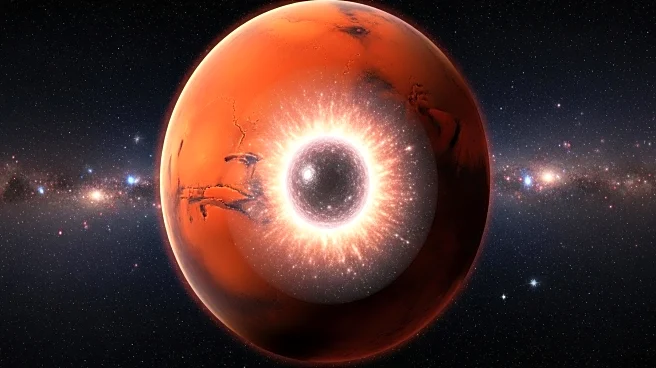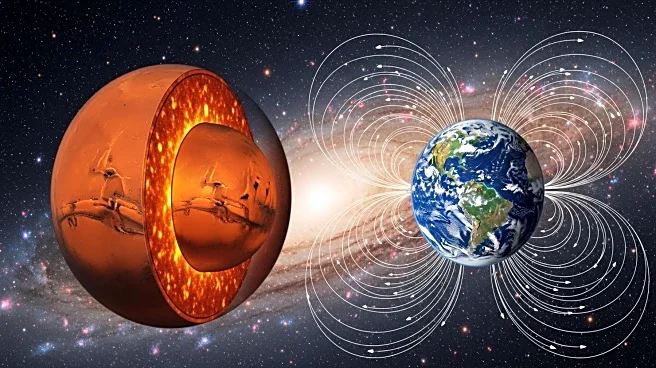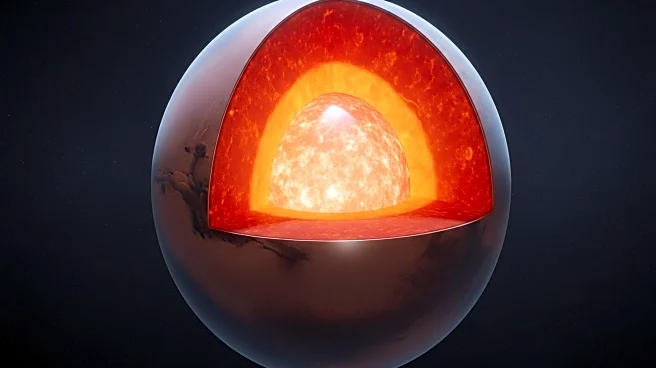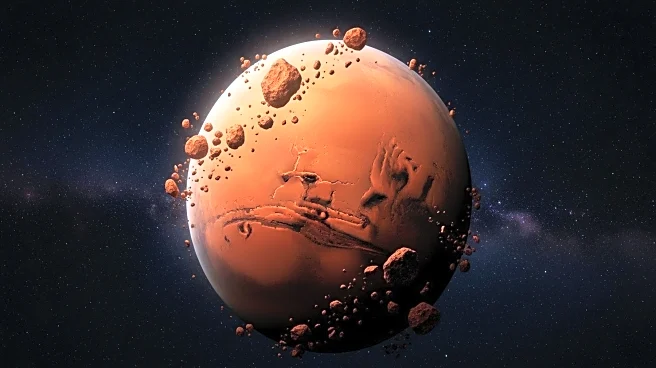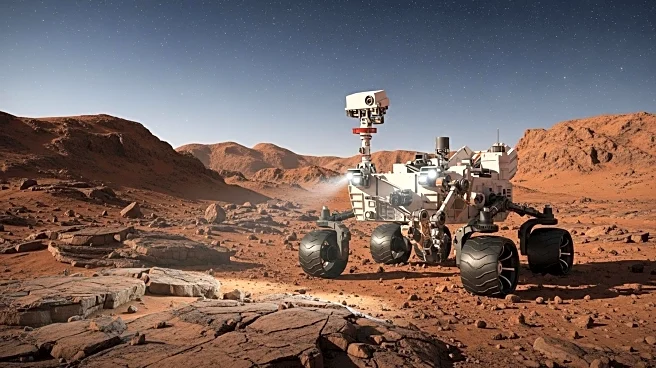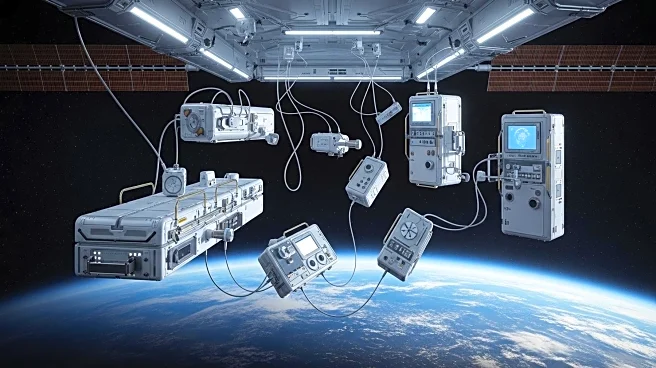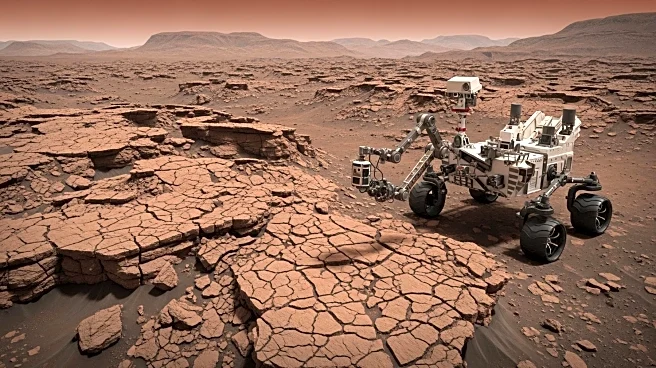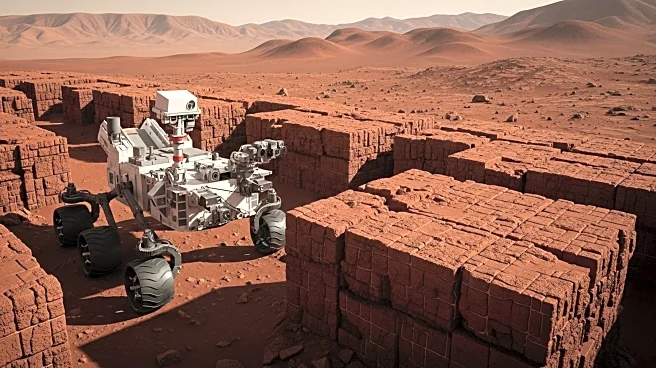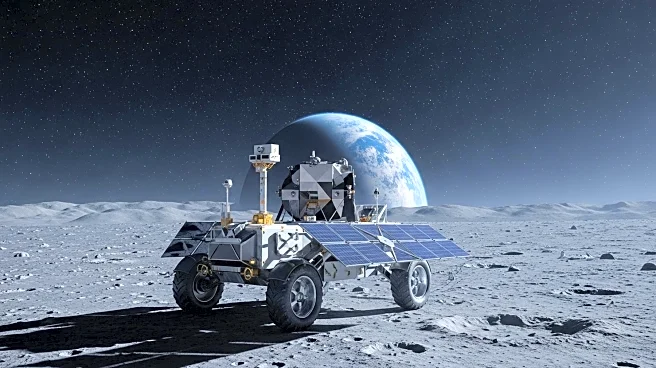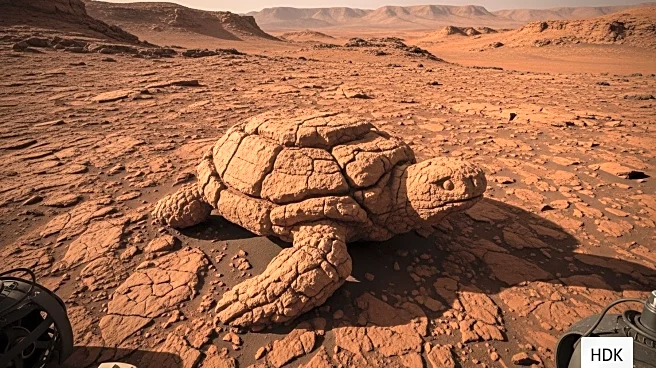What's Happening?
Recent findings from NASA's InSight mission have revealed that Mars possesses a solid inner core surrounded by a liquid outer core, akin to Earth's structure. This discovery, published in Nature, addresses a longstanding mystery about the Martian interior. The study, led by Huixing Bi from the University of Science and Technology of China, utilized novel data analysis techniques to extract weak seismic signals from the noise, indicating the presence of a solid layer within the liquid core. Previously, the Martian core was thought to be entirely liquid, but the new results suggest a more complex structure. This insight into Mars' core provides crucial information about the planet's evolution, including its past atmospheric conditions and potential for a magnetic field similar to Earth's.
Why It's Important?
Understanding Mars' core structure is vital for comprehending the planet's historical climate and atmospheric changes. The presence of a solid inner core suggests that Mars may have once had a magnetic field, which could have protected its atmosphere from solar winds, similar to Earth. This has implications for the planet's ability to support liquid water and potentially life in the past. The findings contribute to broader planetary science by offering insights into the conditions necessary for a planet to develop a magnetic field and sustain a habitable environment. This knowledge is essential for future Mars exploration missions and the search for life beyond Earth.
What's Next?
The discovery of Mars' solid core is expected to prompt further analysis and re-evaluation of existing seismic data from the InSight mission. Scientists will likely explore the implications of this finding on Mars' geological history and its potential for past habitability. Future missions may focus on studying the planet's magnetic history and atmospheric evolution to better understand its transition from a potentially habitable environment to the cold, dry desert it is today. Additionally, the scientific community may engage in discussions to reconcile these new findings with previous models of Mars' core structure.
Beyond the Headlines
The revelation of Mars' solid core opens up new avenues for understanding planetary formation and evolution in our solar system. It challenges previous assumptions about the necessary conditions for a planet to develop a magnetic field and sustain life. This discovery may influence the criteria used to assess the habitability of exoplanets, as scientists seek to identify planets with similar core structures that could support life. The study also highlights the importance of advanced data analysis techniques in uncovering subtle signals that can lead to significant scientific breakthroughs.
